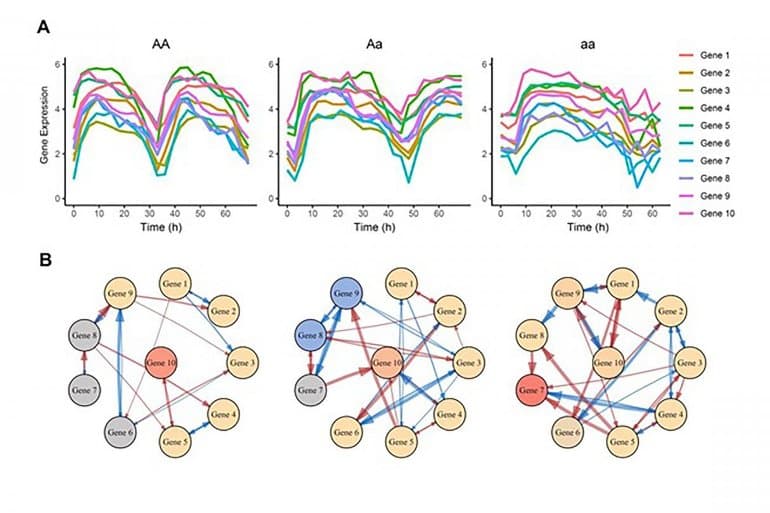Summary: New genetic findings related to circadian rhythm could have implications for humans, animals, and even plant life.
Source: American Institute of Physics
How body clocks work could lead to science that can turn an early bird into a night owl or vice versa as well as other advances, like helping crops grow all year long.
In Applied Physics Reviews, by AIP Publishing, scientists at Penn State report on their work advancing knowledge about circadian rhythms, the natural process that governs sleep and waking patterns in humans, animals, and plants.
Researchers have identified a set of genes, called clock genes, that control these rhythms. But a more complicated network of genes than previously known appears related to circadian rhythms. More fully understanding this network is key to understanding how the rhythms work and could potentially be changed.
The authors detail a statistical model they are using to help identify all the genes involved in this network. With the help of scientists from other disciplines, they hope to fully understand how these genes work together to make one person more productive in the early morning while another thrives in the middle of the night.
Doing so could lead to the creation of medicines that would help someone who is naturally a day person but required to work nights, or one who struggles to be productive first thing in the morning.
“If we understand the gene for a night owl, we can develop a drug to activate that gene for an early bird who has to live a lifestyle like a night owl,” said author Rongling Wu, director of the Center for Statistical Genetics at Penn State.
There are also possible health benefits. Disrupted circadian rhythms have been linked to health issues including depression, anxiety, weight gain, and cardiovascular disease.

And while most people probably think of circadian rhythms in humans, plants and animals have them, too. A breakthrough in understanding the clock-gene network could help increase crop production.
For example, wheat, which tends to “rest” during the middle of the day, could be modified to grow all day long and be harvested more quickly. Or a crop that does not grow well in northern areas with less daylight and colder temperatures could have genes altered to make it ignore those conditions.
“We can increase our production,” Wu said. “If we can activate the correct gene, we can use all of that time. But we need to bring together different researchers from other fields to better understand such a complex problem.”
About this genetics research news
Source: American Institute of Physics
Contact: Larry Frum – American Institute of Physics
Image: The image is credited to Rongling Wu
Original Research: Open access.
“Statistical mechanics of clock gene networks underlying circadian rhythms” by Rongling Wu, Lidan Sun, Ang Dong, and Christopher H. Griffin. Applied Physics Reviews
Abstract
Statistical mechanics of clock gene networks underlying circadian rhythms
All multicellular organisms embed endogenous circadian oscillators or clocks that rhythmically regulate a wide variety of processes in response to daily environmental cycles.
Previous molecular studies using rhythmic mutants for several model systems have identified a set of genes responsible for rhythmic activities and illustrated the molecular mechanisms underlying how disruptions in circadian rhythms are associated with the sort of aberrant cell cycling. However, the wide use of these forward genetic studies is impaired by a limited number of mutations that can be identified or induced only in a single genome, limiting the identification of many other conserved or non-conserved clock genes.
Genetic linkage or association mapping provides an unprecedented glimpse into the genome-wide scanning and characterization of genes underlying circadian rhythms. The implementation of sophisticated statistical models into genetic mapping studies can not only identify key clock genes or clock quantitative trait loci (cQTL) but also, more importantly, reveal a complete atlas of the genetic control mechanisms constituted by gene interactomes.
Here, we introduce and review an advanced statistical mechanics framework for coalescing all possible clock genes into intricate but well-organized interaction networks that regulate rhythmic cycles.
The application of this framework to widely available mapping populations will reshape and further our understanding of the genetic signatures behind circadian rhythms for an enlarged range of species including microbes, plants, and humans.






